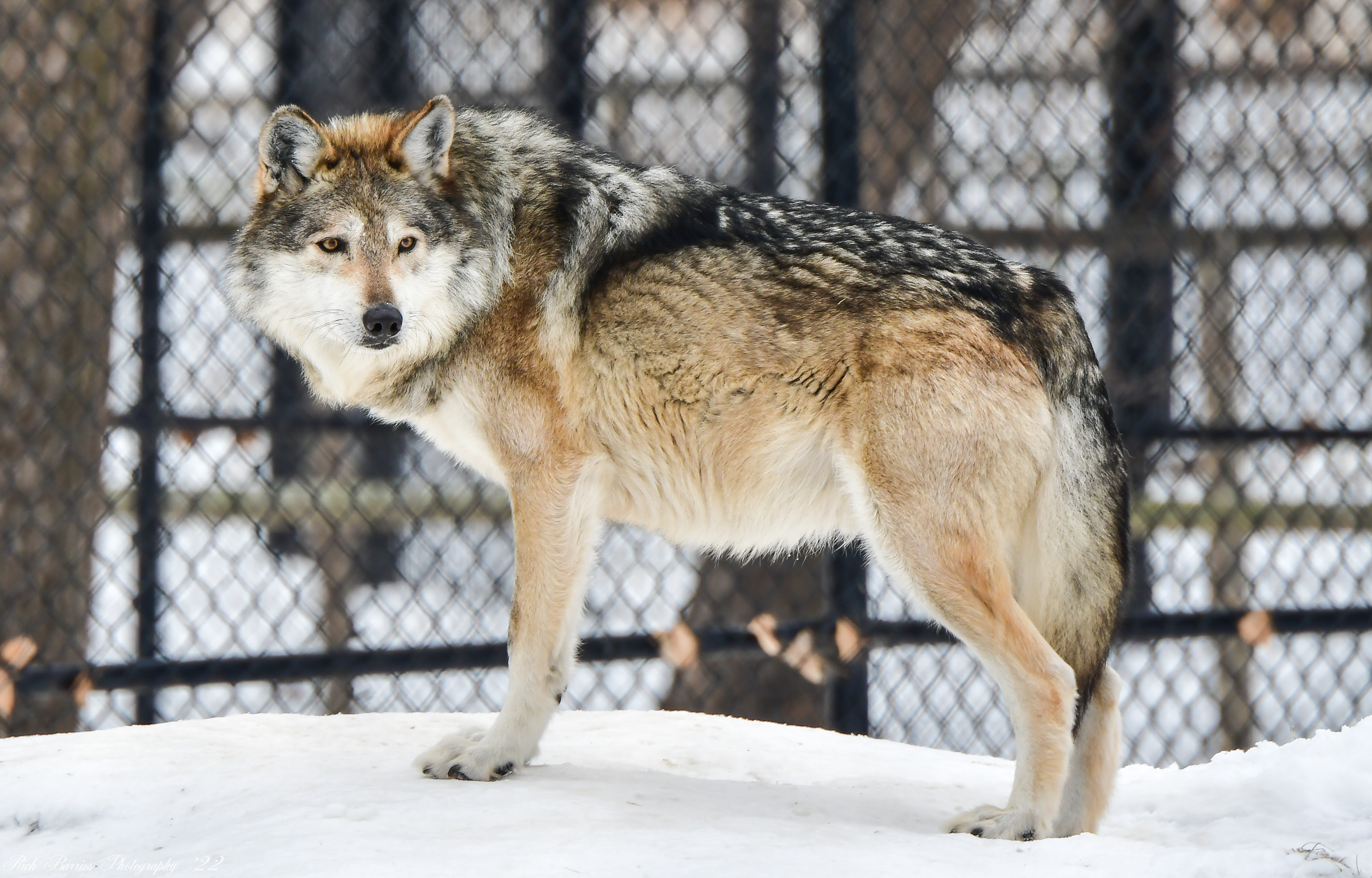* Threatened or Endangered

Gray Wolf *
: Canis lupus
: Mammal
: Northern Michigan west to suitable habitat in Montana, Idaho and Wyoming and a large geographic range in Alaska and Canada and some regions in Europe, Middle East and Asia.
: Prey ranging from field mice to moose, depending on availability and pack numbers.
: Weight 80 to 120 pounds.
: Once nearly extirpated in many areas, has made a good comeback in many protected areas.
• Once nearly extirpated in many areas, gray wolves have made a good comeback in many protected areas.
• Wolves generally mate for life and typically only the alpha pair will mate in the pack.
• Packs can range in size from 2 to 35 members.
o Packs with more members feed on larger prey, including moose, caribou and other “mega-vertebrates.”
o Smaller packs feed on mice, rabbits, deer, and similar-sized prey.
• Howling is used to communicate with other wolves and can be heard for many miles on a calm night.
• Mexican wolves are an endangered subspecies of gray wolf that reside in southwestern United States and northern Mexico.
Respect native wildlife by remembering that…it’s wild! When enjoying native land where wildlife lives, always be aware, be safe, and leave no trace. Never approach, taunt, or feed wildlife. Interacting with them can be dangerous to you and to them. Instead, enjoy their beauty and their ecosystem without disturbing them. To learn more, follow these links:
gf.nd.gov/wildlife/orphaned
www.nationalparks.org/connect/blog/tips-safely-visiting-national-parks
Gray Wolf (Canis lupus) | U.S. Fish & Wildlife Service (fws.gov)
The Mexican Wolf is an endangered subspecies of the gray wolf and also resides at the Dakota Zoo. Thanks to the partnership between accredited zoos and the US Fish and Wildlife Service, the species is making a comeback. Just by visiting today you are helping wolves through the Dakota Zoo Conservation Fund. Consider an additional donation to our conservation fund and visit https://www.fws.gov/program/conserving-mexican-wolf to learn more.
